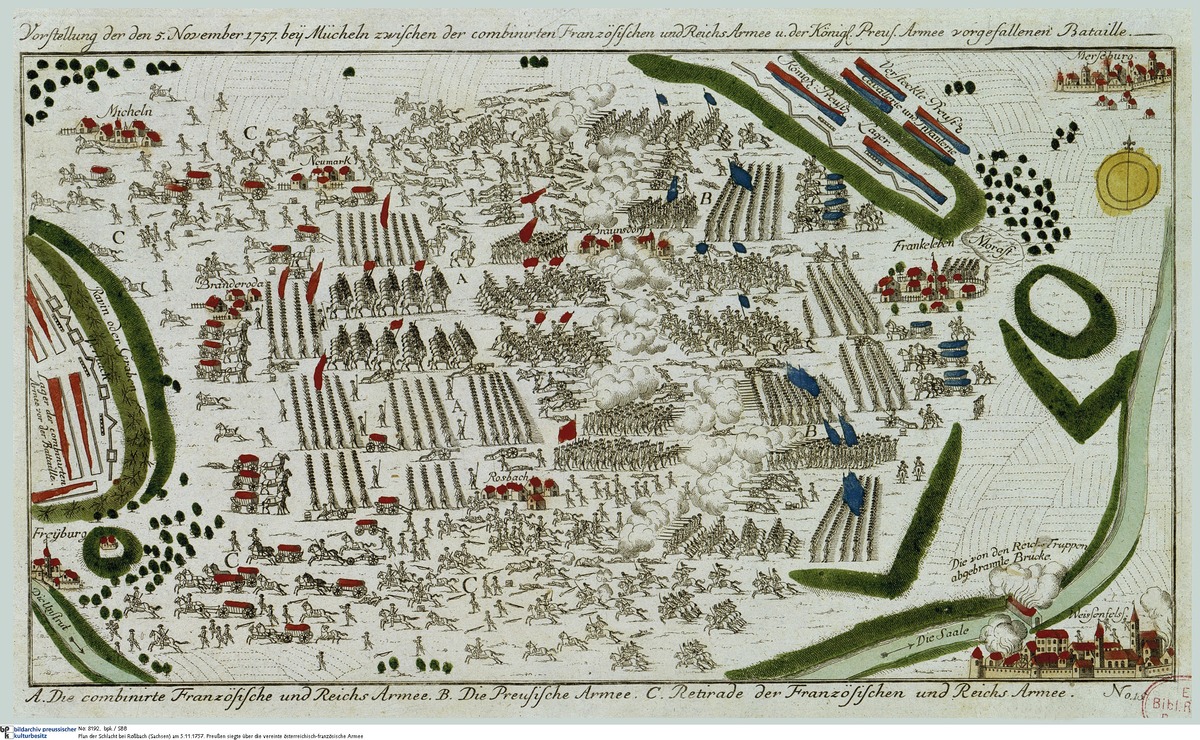Abstract
In the second year of the Seven Years War (1756-63), Frederick (“the
Great”) of Prussia (r. 1740-86) saw an enemy coalition of Austria,
Russia, Sweden, and France descend upon on the Prussian heartland.
Despite severe difficulties, Frederick scored a resounding victory at
the battle of Roßbach (Saxony) on November 5, 1757. This victory was
followed by another at Leuthen (Silesia), one month later. The victory
at Roßbach, accomplished with relatively few Prussian casualties, caused
Frederick's popularity to soar in many parts of Germany. His popularity
also grew in allied Great Britain, which increased its financial support
for Prussia and kept the French army engaged in other theaters of war.
The map reproduced here shows the deployment of Prussian troops (blue
banners, on the right) and the combined imperial and French armies (red
banners, on the left) in a battle that lasted less than two hours and
was decided by the Prussian cavalry under the command of General
Frederick William von Seydlitz (1721-73). .
